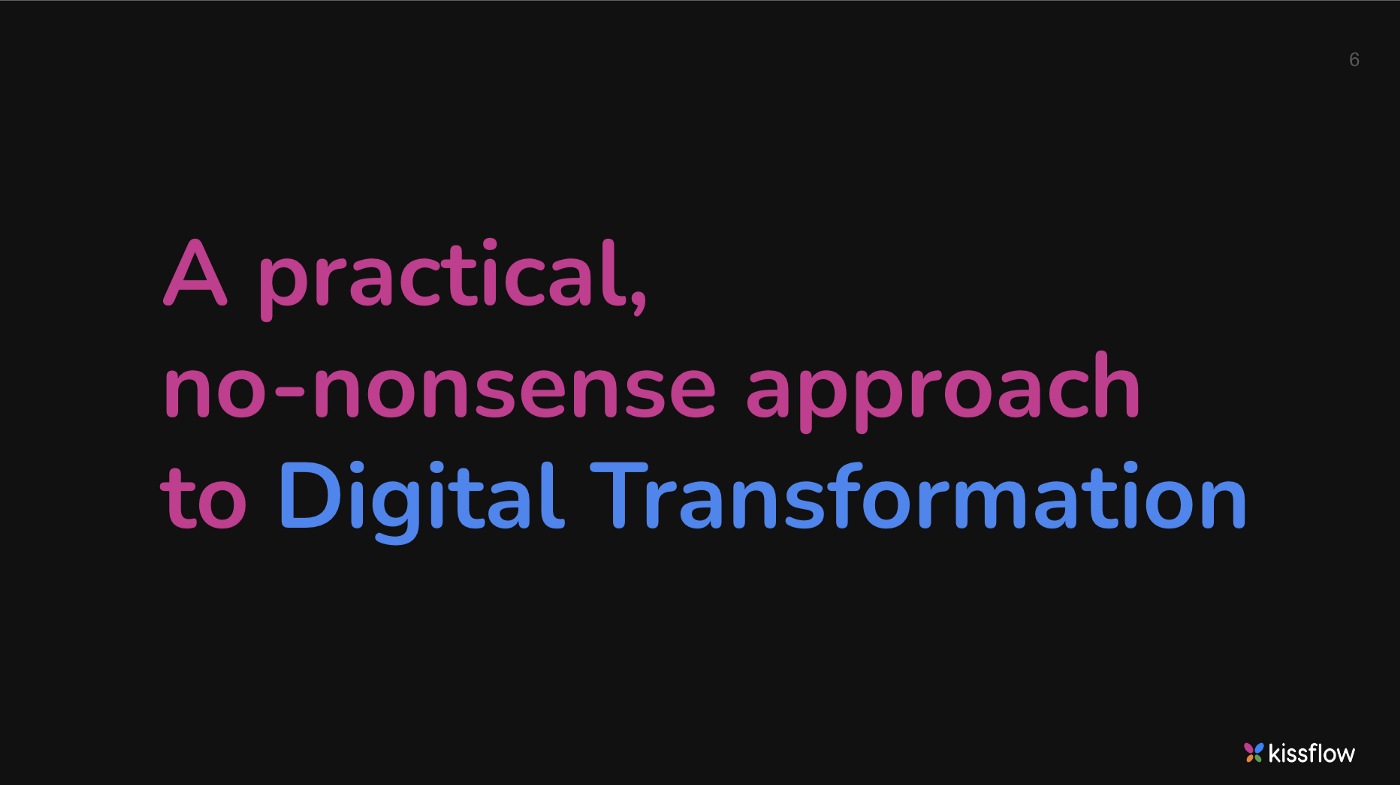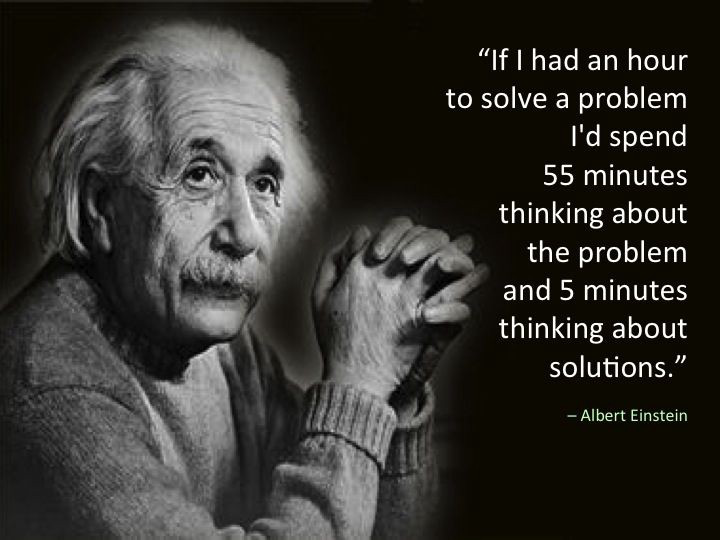
BCG recently published a report saying that only 30% of digital transformation efforts are successful. Billions are poured into digital transformation efforts every quarter across the world, and if the report is any indication, there are billions wasted across all industries.
A digital transformation strategy requires a holistic approach that includes integrating digital technology into various aspects of a business, aiming to optimize processes, enhance collaboration, and ultimately increase delivery speed and customer satisfaction.
So how do you ensure your digital transformation efforts provide a considerable net value-add? Even with all the resources, technologies, and dollars at disposal in large enterprises, digital transformation is still a scary effort, giving CTOs and CIOs sleepless nights.
Defining digital transformation
To begin with, it’s crucial to have a clear understanding of “What is Digital Transformation”.
Sans industry jargon, in its simplest and purest essence, Digital Transformation is just a combination of two things -
2031.png?width=1400&height=300&name=Add%20a%20heading%20(1).png)
Digitization has been in practice for many decades. It simply means to digitize information, or in other words, make data available in a digital format.
Transformation, on the other hand, is not as simple and can potentially be a never-ending process. How you define transformation is very organization-specific and can be influenced by multiple factors like budget and resources at disposal, technological advancements over time, etc.
Usually, transformation is a two-step process -
- Optimization: Making existing processes and systems better. A more fancy term in the market for this is “digitalization”, but we are staying away from jargon and are more focused on simplifying things, so let’s stick to optimization.
- Value Creation: Creating new business value. Going beyond what is existing and truly transforming as an organization using technology. This is what makes true transformation a never-ending process, the same way customer satisfaction is a never-ending pursuit.
Embarking on a digital transformation journey
Embarking on a journey of digitization, optimization and ultimate transformation can be a daunting task, considering the multitude of technologies on offer and the myriad business operations that fall under the CxO’s purview for transformation.
Peer pressure from competitors in the market, fear of missing out on early adoption of the latest technologies, and other such factors push CIOs and CTOs to invest in large-scale digital transformation projects before they have had a chance to do their groundwork properly.
To be fair to them, “I need to lay out the framework first..” is not an easy conversation that they can have with business leaders who are looking to boost revenue in the upcoming quarter. Management will always need things yesterday — that’s just how it is and CIOs and CTOs are caught between a rock and a hard place more often than not.

A CTO/CIO juggling multiple responsibilities
Laying the foundation for success
So how does one escape this vicious circle? How can you, as a CTO or as someone heading digital transformation efforts, ensure that you are putting your money to good use and setting yourself up for success?
At the risk of sounding unrelatable and philosophical — look inward! Understand and define the problem clearly before solutions for it. Begin with defining your existing landscape and laying out a framework to operate on — forget the latest technologies, forget market conditions and set aside thoughts about your competitors’ technology eco-system.
Focus on the problem, define and document it, and understand where you want to invest and in what order. I know that sounds like generic advise, but indulge a little longer and I promise to layout a framework that you can put to use in this regard.
Defining the problem also doesn’t involve researching on latest technologies — don’t worry about cloud migration, RPA, ITSM, OCR, Hyper Automation, Analytics, Middleware, and a million other technologies — that come later. We are not coming up with solutions. Our focus is to come up with a framework first to define the problem at hand.
Imagine you are a large bank with 20,000+ employees across 30+ departments offering 100s of financial products to millions of end-customers. The technology ecosystem is a massive mix of legacy mainframes, aging document storage systems, disparate processes, overloaded IT teams, off-the-shelf cutting-edge systems that struggle with user adoption, disjoint and redundant ETL jobs, siloed cloud-hosted core banking applications and an unstable suite of customer-facing digital channels.
How do you condense all this into a whiteboard and layout a digital transformation roadmap? Put on a CTOs hat for a moment and imagine presenting a roadmap to management — where do you even begin?
Digital transformation layers
At the core, technology transformation aimed at digitization, optimization, or value-creation, always operates on a set of finite abstract layers. Let’s call these “the layers of digital transformation”. These layers don’t depend on technological advancement, budget constraints, or existing landscape.
Understanding what each of these layers means, how they are stacked against each other, and what their focus areas are will help you create a problem framework and condense operational transformation needs across various departments into a whiteboard conversation you can then have with your management. Working across these layers will be the holistic digital transformation approach.
The below diagram helps you visualize these layers, how they are stacked against each other, and #focusAreas that you will need to consider when investing in digital technology to transform them.
A Framework for a holistic approach to digital transformation
Once you understand the “layers of digital transformation” — shown in the image above and the “stages of digital transformation” — Digitization, Optimization, and Transformation, you can then carve a framework by marrying the two. Creating this matrix will help you condense a complex transformation project into a whiteboard discussion.
Let’s consider a loan origination process in a bank to illustrate this framework.
An end-to-end loan origination process touches multiple departments like call centers, relationship managers, underwriting, booking, funding, QA and so many others. When you tactically find solutions in a siloed manner and reactively fix this across the different teams, you would typically end up investing in multiple disparate systems — CRM for the call center, an underwriting rules engine, an OCR system for document verification, RPA for the booking team to eliminate manual tasks, and a new core banking system that complies with the latest regulatory needs for the newly launched loan products. To stay away from building this sort of fragmented enterprise, take a more strategic (instead of tactical) digital transformation approach and define your problem across the multiple departments and fit them into a framework first.
Let’s look at how you can whiteboard the problem of transforming a Loan origination process using the framework discussed above.
Please note, the examples of digital transformational use cases listed below are only indicative to illustrate the framework and not exhaustive enough for actual implementation.
1. Data Layer
How do you store and retrieve data securely? How do you scale? How do you ensure data integrity and avoid redundancy/duplication?
-
Digitization: Client and account data stored in DB instead of excel sheets.
-
Optimization: ETL to sync duplicate transactions and maintain one source of truth. Enhanced document storage mechanisms for faster document retrieval.
-
Transformation: Use elastic search to index and retrieve data exponentially faster. Leverage OCR capabilities to read and digitize unstructured data and expose them as APIs.
1. Data Layer
How do you store and retrieve data securely? How do you scale? How do you ensure data integrity and avoid redundancy/duplication?
2. Systems or Application layer
How do you store and retrieve data securely? How do you scale? How do you ensure data integrity and avoid redundancy/duplication?
-
Digitization: Exposing CRUD operations and APIs to democratize data access across different systems and applications.
-
Optimization: Deploy a middleware layer to improve transactional efficiency and standardize API protocols (REST/SOAP) like authentication, exception handling, etc. getCustomerInfoByID(params) can be one API across the entire organization.
-
Transformation: Moving to a micro-services-based architecture and migrating into a cloud ecosystem with container-based CI/CD pipeline.
2. Systems or Application layer
How do you store and retrieve data securely? How do you scale? How do you ensure data integrity and avoid redundancy/duplication?
3. Process Layer
How do you streamline your business processes?
-
Digitization: Business rules to route work systematically instead of manually, integration to pre-fill customer & loan data, task assignment and completion streamlined across all departments into a unified digital system.
-
Optimization: Notifications and SLAs to increase employee productivity, reports, and dashboards to offer pipeline visibility to management, and extensive auditing to ease the QA process.
-
Transformation: Deploy process mining tools that highlight business productivity issues for future optimization.
3. Process Layer
How do you streamline your business processes?
4. Experience layer
How do your internal (employees) and external customers interact with the processes and systems? Modernization and Standardization through UI. Simplification and transformation through UX.
-
Digitization: Move from a paper-based to a web-based online loan application. Customer support and RMs can add additional notes and information in the same web application (instead of through emails/chat) for downstream processing.
-
Optimization: Ability for the customer to check the real-time status of loan applications through the same portal without having to call customer care. Standardization of the ‘customer search’ function across all departments.
-
Transformation: Ability for customers to check/receive loan application status through text messages. The ability for RMs to approve an application from his mobile phone.
4. Experience layer
How do your internal (employees) and external customers interact with the processes and systems? Modernization and Standardization through UI. Simplification and transformation through UX.
5. Collaboration layer
How do cross-functional teams collaborate more effectively to get work done faster?
-
Digitization: Having communication tools and shared content repositories so work collaboration is easier and allows information to be exchanged digitally across multiple teams.
-
Optimization: Onboarding is a holistic collaboration tool that lets you share messages, documents, and announcements, create and manage projects, etc.
-
Transformation: Integrating collaboration components with admin and shared services. A support and incident ticket getting auto-generated from a slack chat is a good example.
5. Collaboration layer
How do cross-functional teams collaborate more effectively to get work done faster?
6. Intelligence layer
How do you derive insights from data and apply intelligence to the work that you do?
-
Digitization: AI/ML systems and algorithms are only as good as the data that is fed to them so, extensive auditing of actions, standardization of data structures, and extraction mechanisms for meta-data should be in place to analyze Loan data, customer data, process meta data etc.
-
Optimization: Once the data engineering work is done, deploy AI models into production to add intelligence. For example, prompt next-best actions to customer care based on historical data.
-
Transformation: Integrate AI with risk and DLP systems to start preemptively highlighting regulatory and compliance risks.
6. Intelligence layer
How do you derive insights from data and apply intelligence to the work that you do?
Conclusion
For each of the core business functions within your organization, start by documenting use cases into this matrix before you invest in technology to transform them. As a CxO, it is very important to have a vision of these layers across all your core business functions so you can get better ROI from the technologies that you onboard.
This will help ensure that you never address your problems in siloes — for example, you can have one unified platform for digital transformation to tackle the process layer across all your departments instead of buying multiple solutions to address specific use cases within each department.
Digital transformation is no easy task, but having a framework and a set of guidelines will help you begin the journey on the right footing. Analyze the problem at hand and define it clearly before investing in solutions. The greatest minds seem to agree with this holistic digital transformation approach.

P.S. Specifying tools, technologies, and case studies are avoided intentionally in the article to stay away from jargons and focus on laying out a generic framework instead. Details around admin functions, infra, security, and shared services are also not discussed to focus exclusively on business operations transformation.

Manish Narayanaswami
Associate Director - BFSI Sales at Kissflow
Manish is an Associate Director at Kissflow and heads the BFSI practice. For over 13 years, Manish has worked with Fortune 500 organizations across the globe and has helped them digitally transform with cutting-edge technologies. He stays enthusiastic about emerging technologies and their ability to revolutionize and simplify the digital transformation journey for an enterprise.
More resources on Digital Transformation
1. Build digital transformation framework to scale up your journey
2. How to enable Digital Transformation in the workplace?
3. The right partnership between IT and Business matters in Digital Transformation
4. Digital Transformation for Business: Everything you should know
5. Why your employees should be at the center of Digital Transformation strategy?